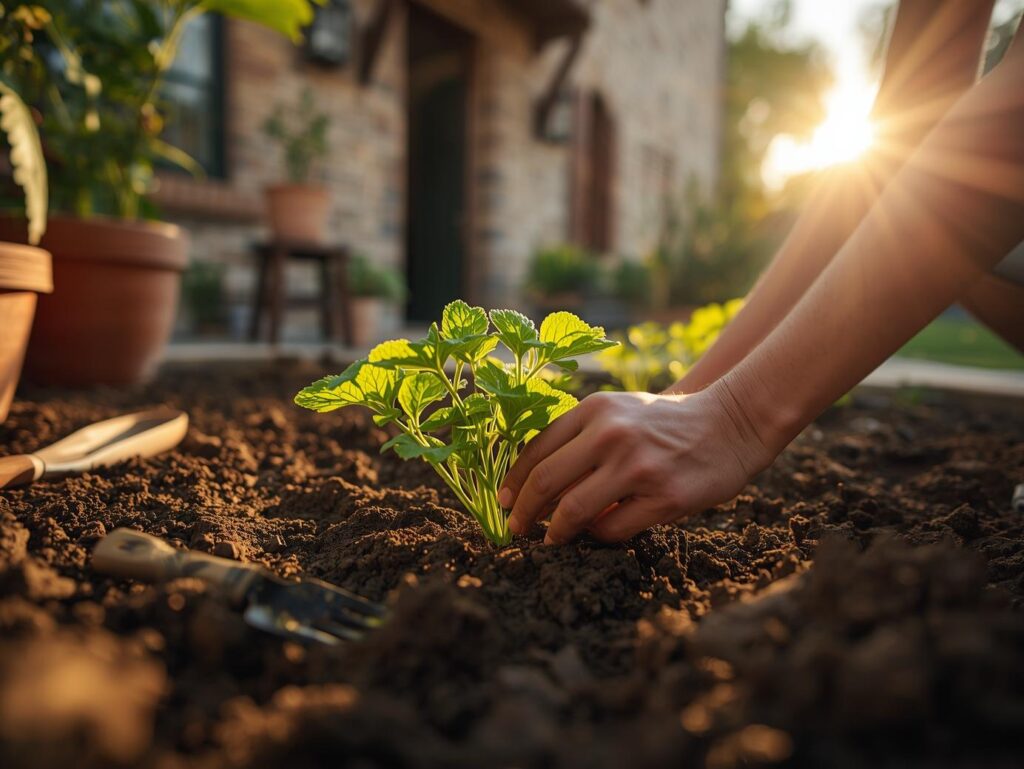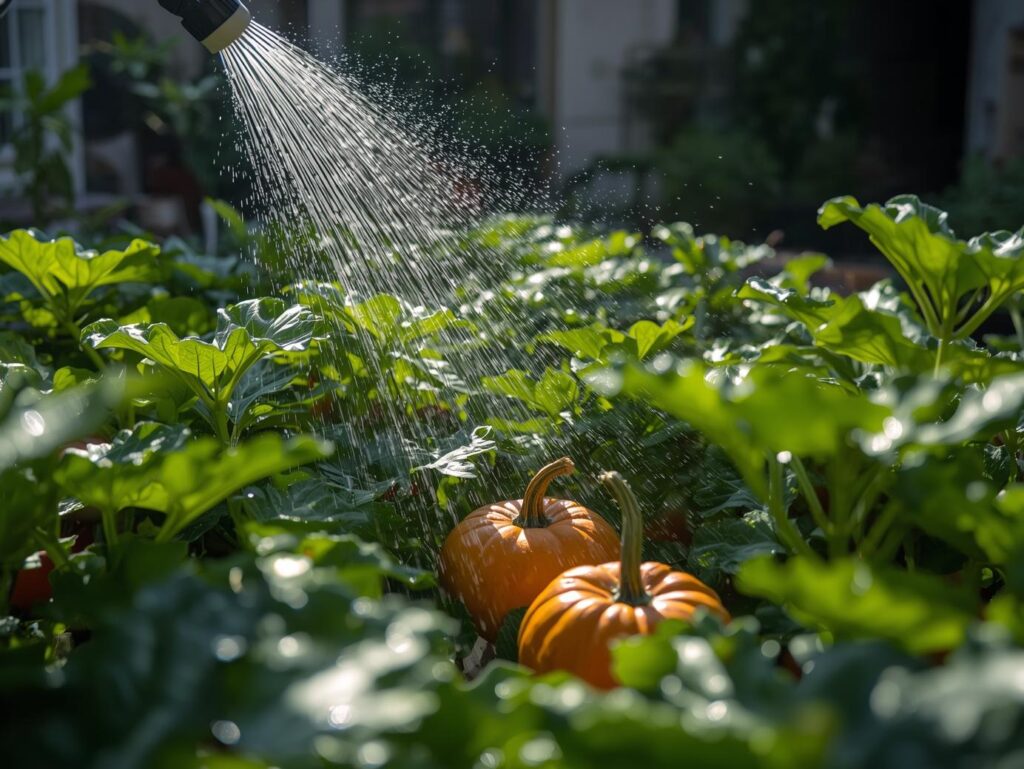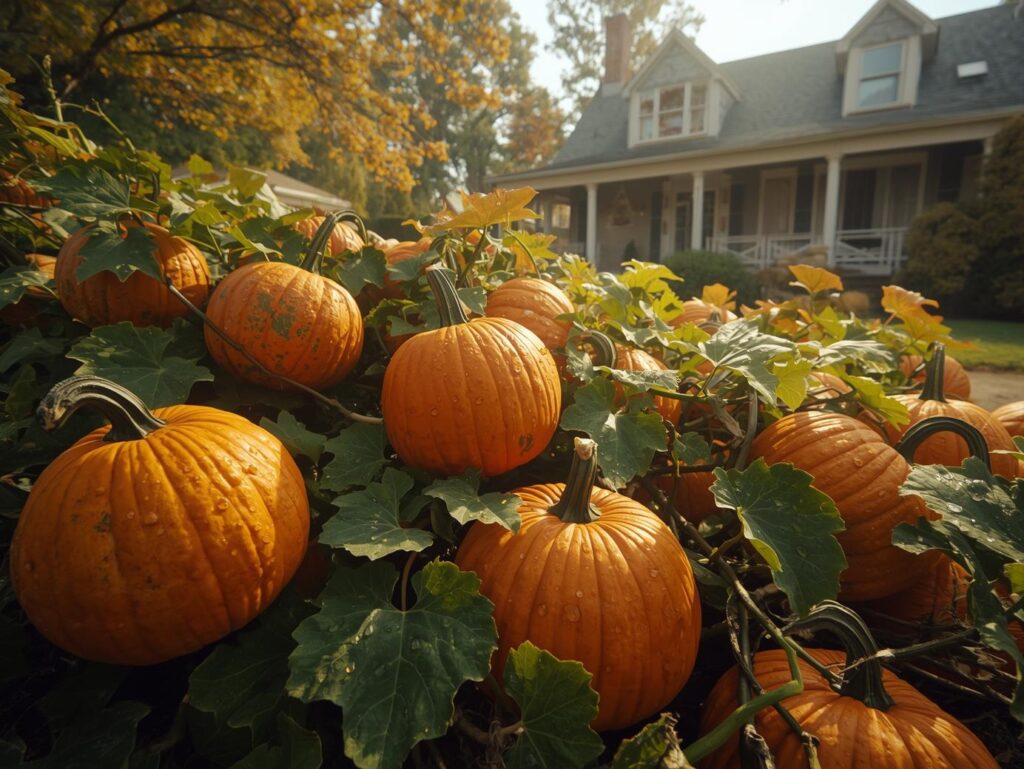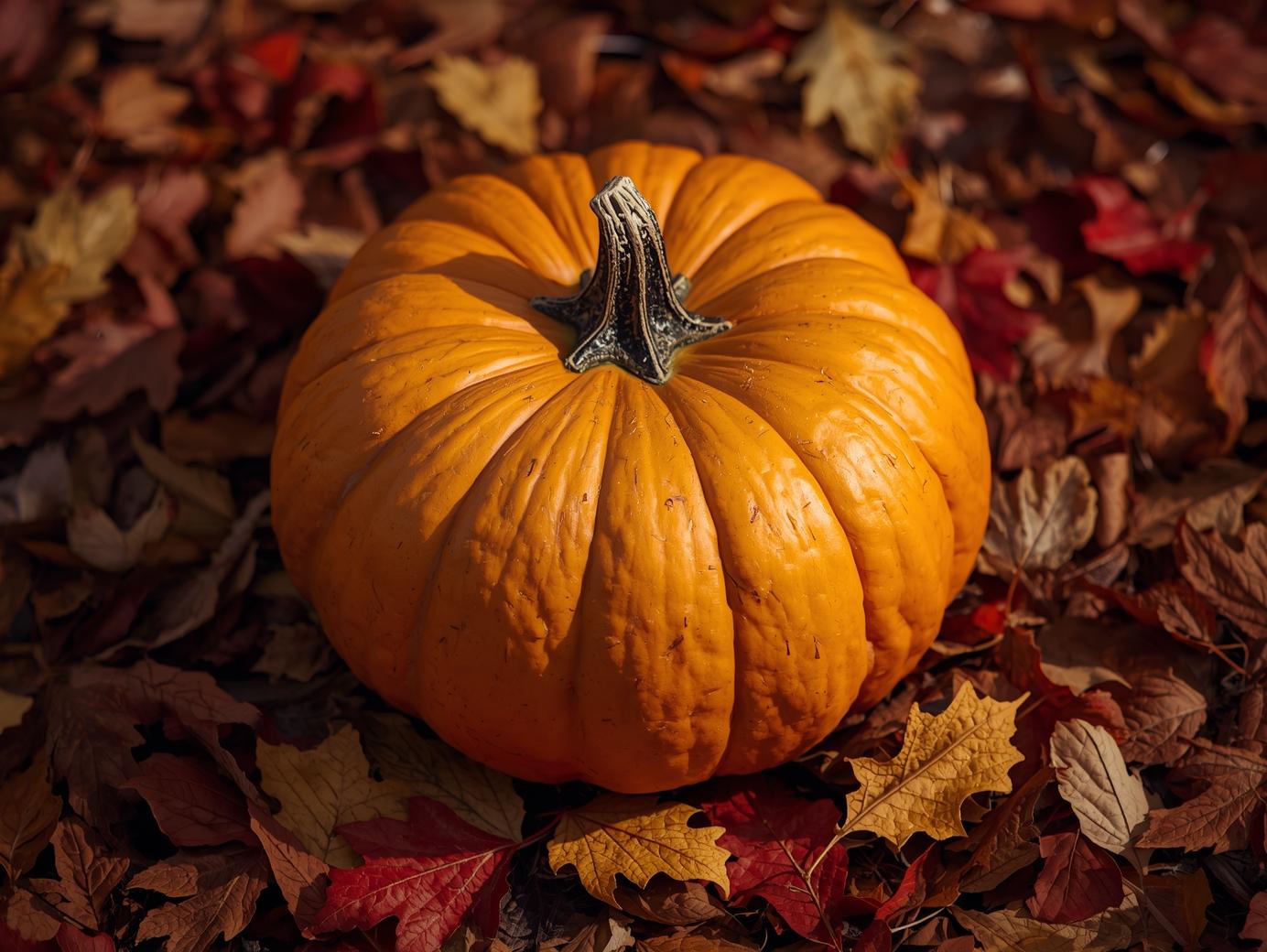Site Preparation
Preparing the site properly is the first key step to growing healthy and productive pumpkin plants in your courtyard. Pumpkins need a spacious, sunny area with at least six to eight hours of direct sunlight each day. In smaller U.S. courtyards, choose a corner where the vines can sprawl freely or climb on a sturdy trellis. Before planting, clear the site of weeds, rocks, and debris to provide a clean bed for the vines. Pumpkins thrive in warm soil, so choose a planting site that retains warmth and drains well.
Once the area is cleared, loosen the soil to a depth of about 12 inches using a garden fork or tiller. Mixing in organic compost or well-rotted manure improves soil structure and adds essential nutrients for strong growth. Mound the soil into small hills about three feet wide and six to eight feet apart to promote good drainage. In courtyards where space is limited, large containers or raised beds can be equally effective when filled with rich, loamy soil. Proper preparation ensures a healthy start for your pumpkin plants and supports vigorous vine development.
Soil Selection
Choosing the right soil is critical for growing high-quality pumpkins in home courtyards. Pumpkins prefer well-drained, fertile loam soil that is rich in organic matter. The soil should have a pH level between 6.0 and 6.8 for optimal nutrient absorption. Heavy clay soils should be amended with compost or sand to improve aeration, while overly sandy soils can be enriched with organic matter to enhance moisture retention. Conducting a soil test before planting will help identify any nutrient deficiencies and guide proper amendments.
A good soil mixture promotes healthy root growth, which is essential for supporting the long vines and large fruits of pumpkin plants. Courtyard gardeners in the USA can benefit from using high-quality potting mixes if growing pumpkins in containers. Adding compost or aged leaf mold enhances the soil’s microbial activity and overall fertility. With well-prepared, nutrient-rich soil, your pumpkin plants will establish quickly and produce healthy, flavorful fruits throughout the growing season.
Planting
Pumpkins can be planted either by direct seeding or transplanting seedlings, depending on the growing conditions. In most regions of the USA, sow the seeds outdoors after the last frost date when the soil temperature reaches at least 65°F. Plant two to three seeds per hill about one inch deep and thin to the strongest seedling once they germinate. For indoor starting, plant seeds in biodegradable pots three weeks before the last frost, and transplant them outdoors carefully to avoid disturbing the roots.

Spacing is important since pumpkin vines spread widely. Allow at least five to six feet between hills or mounds for smaller varieties and up to ten feet for larger types. When growing in courtyards, vertical trellising can help manage space efficiently. Compact or bush varieties are ideal for small gardens and containers. Proper spacing and gentle handling during planting help prevent competition for nutrients and ensure a strong, healthy start for your pumpkin crop.
Watering
Pumpkins require consistent moisture throughout their growth cycle, especially during flowering and fruit development. Deep watering once or twice a week encourages strong root growth, while shallow watering can cause weak plants. The goal is to keep the soil evenly moist without making it waterlogged. Using a soaker hose or drip irrigation system delivers water directly to the roots, minimizing evaporation and preventing foliage diseases.

Avoid overhead watering to reduce the risk of fungal infections such as powdery mildew. Mulching around the base of the plants helps retain soil moisture, regulate temperature, and suppress weeds. During hot U.S. summers, check the soil regularly to ensure it doesn’t dry out completely. Consistent watering supports steady growth, promotes fruit set, and helps pumpkins develop their characteristic size and flavor.
Fertilizing
Pumpkins are heavy feeders that demand a nutrient-rich growing environment. Before planting, enrich the soil with compost or organic manure to supply a steady source of nutrients. Once the vines begin spreading, feed them with a balanced fertilizer containing nitrogen, phosphorus, and potassium. A nitrogen-rich fertilizer is ideal during the early growth stage, followed by a switch to one higher in phosphorus and potassium during flowering and fruiting to encourage strong fruit development.
For organic gardeners, compost tea or liquid seaweed extract works wonderfully to maintain soil fertility naturally. Applying fertilizer every two to three weeks ensures consistent growth and healthy fruit formation. Over-fertilizing, especially with nitrogen, can lead to excessive leaf growth at the expense of fruit production. Balanced nutrition keeps pumpkin plants vigorous, enhances yield, and ensures high-quality pumpkins suitable for cooking or decoration.
Pruning and Training
Pruning and training play an essential role in managing pumpkin vines, particularly in smaller courtyard gardens. Once the main vine develops several secondary branches, pruning excess growth allows the plant to focus its energy on producing larger, healthier fruits. Pinching off the growing tips of side vines after a few fruits have formed helps concentrate nutrients toward ripening the existing pumpkins. This practice also improves airflow around the plants, reducing disease risk.
Training the vines properly ensures optimal space utilization and sunlight exposure. Courtyard gardeners can guide the vines along a trellis, fence, or support frame to prevent crowding and fruit rot. When fruits start to develop, place them on wooden planks or straw to keep them off the damp ground. Proper pruning and training make your courtyard look neat, promote better yields, and produce pumpkins with ideal size and shape.
Pest and Disease Control
Pumpkin plants can be affected by several common pests, including squash bugs, aphids, and cucumber beetles. Regularly inspecting the leaves and stems for early signs of infestation helps prevent serious damage. Removing affected leaves and using organic pest control solutions like neem oil or insecticidal soap can manage these pests effectively. Companion planting with marigolds or radishes also helps repel insects naturally.
Diseases such as powdery mildew and downy mildew can occur, especially in humid U.S. climates. Providing adequate spacing and air circulation reduces these risks significantly. Avoid watering the foliage and rotate crops each season to prevent soil-borne pathogens. Cleaning up plant debris after harvest further minimizes the chances of future disease outbreaks. Consistent monitoring and preventive care will keep your pumpkin plants healthy and thriving.
Fruiting and Harvest
Pumpkin vines start producing flowers six to eight weeks after planting, with male flowers appearing first followed by female flowers that develop into fruits. Successful pollination is key, and hand pollination can be helpful in home courtyards where natural pollinators are limited. Once fruits begin to form, ensure they are supported properly to prevent damage, especially when growing vertically. The fruits will continue to grow and mature over several weeks.

Pumpkins are ready for harvest when their skin turns deep orange and becomes hard. The vines will also start to dry out, signaling maturity. Cut the pumpkins from the vine with a few inches of stem attached to extend storage life. Cure them in a warm, dry location for about a week before storage. Properly harvested pumpkins can last for months, providing fresh produce for cooking, decoration, or even holiday celebrations in your U.S. home.
